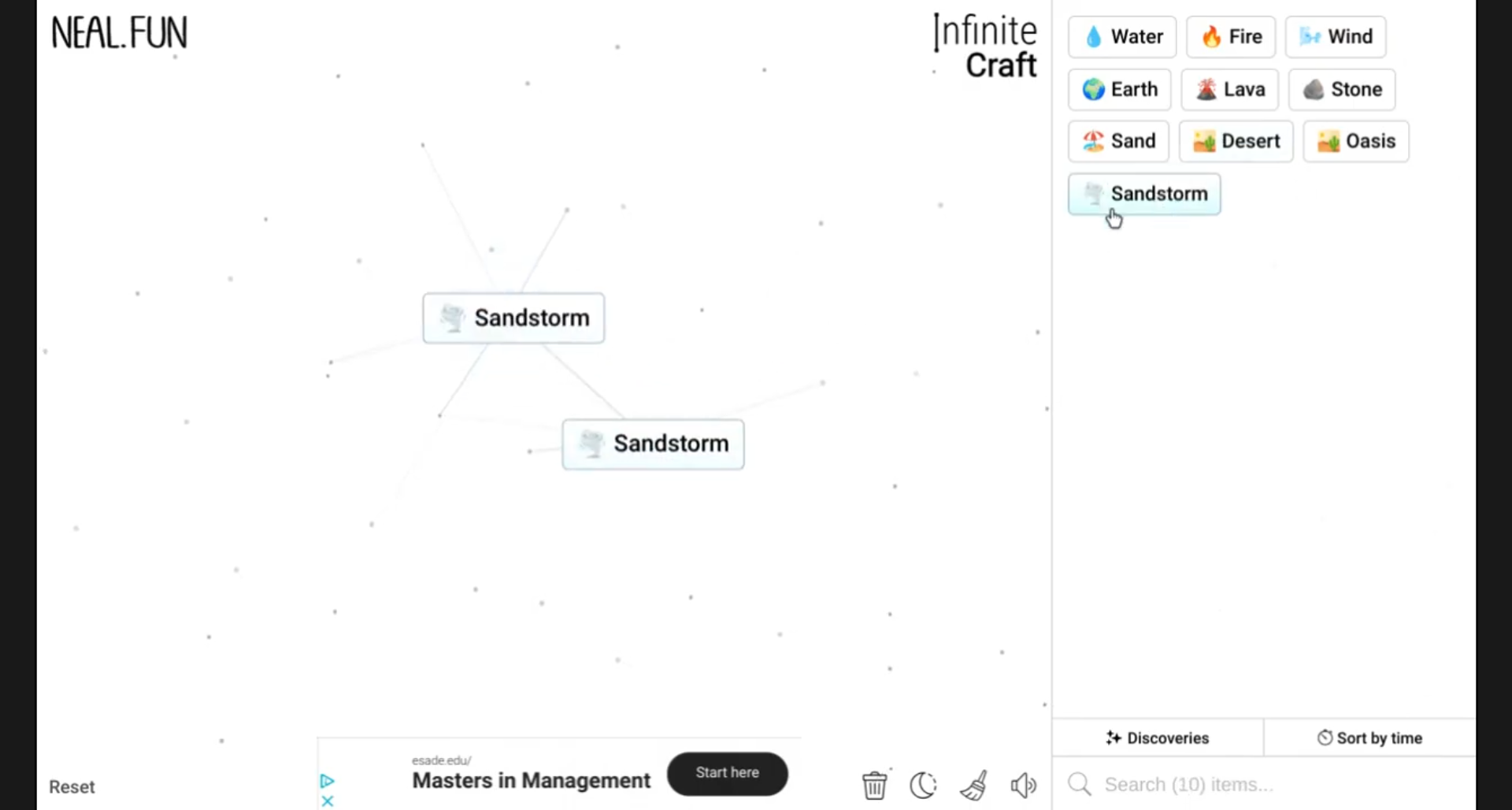Crafting plays an essential role in our daily lives, offering a unique blend of creativity, relaxation, and personal expression. In a world buzzing with technology and fast-paced living, the art of crafting provides a sanctuary where we can slow down, connect with our inner selves, and unleash our creativity. The notion of creating a fulfilling life through crafting can be encapsulated in the concept of “Infinite Crafts.” This idea emphasizes the limitless possibilities and the myriad forms of crafting that can enhance our lives, fostering mental well-being, physical dexterity, and social connections.
In this article, we will delve into the intricacies of how to make life in infinite crafts. We will explore various craft types, their advantages, and how they can seamlessly integrate into your life, regardless of your skill level. From beginner to advanced projects and ways to engage with friends and family through crafting, our guide is designed to inspire and motivate you to embrace the world of crafts while providing actionable tips, resources, and project ideas.
Understanding Infinite Crafts
Definition and Concept
The term “Infinite Crafts” refers to the endless range of crafting activities that individuals can explore throughout their lives. This includes traditional crafts like knitting and sewing, modern techniques involving technology, and everything in between. The freedom to mix different mediums, styles, and methods characterizes infinite crafts, making it an adventure in creativity.
Examples of various craft types that fall under this umbrella include:
– Textile arts: Knitting, sewing, embroidery
– Paper crafts: Card making, scrapbooking, origami
– Woodworking: Furniture making, carving, and woodburning
– Jewelry making: Beading, metalwork, and resin crafts
– Home décor projects: Painting, DIY furniture, and wall hangings
Benefits of Engaging in Crafts
Participating in crafting activities offers numerous benefits that go beyond mere enjoyment. Understanding the advantages of crafts can motivate us to incorporate them more into our daily routines.
Mental Health Benefits
One of the most significant benefits of crafting is its impact on mental health. Engaging in crafts can:
– Reduce stress and anxiety: Crafting allows for a focused, meditative experience, helping clear the mind and alleviate tension.
– Promote mindfulness and focus: The act of crafting helps you stay present and can serve as a valuable form of relaxation.
Physical Benefits
Crafting can also strengthen our physical health:
– Fine motor skill development: Activities such as sewing or beading require precise hand-eye coordination, enhancing dexterity.
– Improving dexterity: Regular crafting challenges the brain and body, making them more adept at intricate tasks.
Social Benefits
Crafting doesn’t just benefit individuals; it fosters community and connection:
– Opportunities for bonding with others: Crafting can be a shared experience, allowing you to bond over common interests.
– Community building through crafting: Many local groups and workshops focus on crafts, providing a space to meet like-minded individuals.
Getting Started with Crafts
Identifying Your Interests
The first step in your crafting journey is identifying the types of crafts that excite you. Here are some broad categories to explore:
– Textile arts: Try activities like knitting, sewing, or quilting.
– Paper crafts: Explore card making, scrapbooking, or origami.
– Woodworking: Start with simple projects like birdhouses or shelving.
– Jewelry making: Experiment with basic beading techniques or wire wrapping.
– Home décor projects: Get creative with painting, upcycling furniture, or creating wall art.
To discover your interests, consider joining a local craft class, participating in workshops, or exploring online tutorials. Don’t hesitate to try new crafts, as experimenting can often lead to surprising new passions.
Essential Tools and Materials
Every beginner should ensure they have a set of basic tools for their crafting endeavors. Here is a list of essential crafting supplies:
– Basic crafting tools: Scissors, glue, a cutting mat, and tape are staples every crafter needs.
– Recommended materials for various crafts:
– Textile arts: Fabric, threads, needles
– Paper crafts: Specialty papers, card stock, markers
– Woodworking: Different types of wood, sandpaper, finishes
– Jewelry making: Beads, wires, tools for shaping

Proper organization of your supplies is crucial. Consider investing in storage solutions like bins, shelves, or portable craft boxes to keep your materials easily accessible.
Craft Projects for Every Skill Level
Beginner Projects
If you’re just starting your crafting journey, begin with simple projects that build your confidence:
– DIY bookmarks: Use cardstock, glitter, and decorative tape to make personalized bookmarks.
– Painted rocks: Collect smooth, flat stones and paint various designs; a fun outdoor activity!
– Easy sewing projects: Consider making a simple tote bag or pillow cover to practice basic sewing techniques.
Intermediate Projects
Once you’ve honed your skills, tackle intermediate projects that allow for more creativity:
– Quilting basics: Start with a lap quilt or simple patchwork designs.
– Creating custom greeting cards: Experiment with different techniques to make unique cards for friends and family.
– Upcycling furniture: Take an old piece and give it new life with paint or new upholstery.
Advanced Projects
For experienced crafters looking for a challenge, consider diving into advanced projects:
– Furniture restoration: Learn techniques for repairing and refinishing old furniture.
– Advanced sewing techniques: Challenge yourself with garment making or intricate design features.
– Complex woodworking projects: Build dining tables or intricate shelving using fine woodworking skills.
Incorporating Crafts into Daily Life
Setting Up a Crafting Routine
To make crafting a regular part of your life, consider the following tips:
– Tips for making crafting a regular part of your life: Start small; set aside time on weekends or specific days of the week for crafting.
– Finding time amidst a busy schedule: Even short crafting sessions can be fulfilling; dedicate as little as 15-30 minutes a day.
– Creating a dedicated crafting space: Designate a small area in your home specifically for crafting, equipped with all your supplies.
Involving Family and Friends
Crafting can be a great way to bond with family and friends.
– Crafting as a bonding activity: Share your crafting interests and invite loved ones to join in.
– Ideas for group projects:
– Seasonal decorations: Create themed decorations together.
– Community craft fairs: Participate as a group and share your creations.
Utilizing Online Resources
The internet offers a wealth of resources for crafters:
– Platforms for inspiration: Websites like Pinterest and Instagram provide a plethora of ideas and tutorials.
– Online classes and tutorials: Websites such as Craftsy or Udemy offer structured classes for a variety of crafts.
– Crafting communities and forums: Engage with other crafters through sites like Ravelry or local Facebook crafting groups.
Crafting for Special Occasions
Crafts for Home Decoration
Transform your home with seasonal crafts that add personality:
– Seasonal crafts for home décor: Create DIY decorations for holidays like Halloween, Thanksgiving, and Christmas.
– DIY wall art: Design unique pieces using your crafting skills that enhance your living spaces.
Personalized Gifts and Cards
Give heartfelt, handmade gifts that show you care:
– Creating unique, handmade gifts: Consider crafting items like personalized mugs, knitted scarves, or photo albums.
– How to craft thoughtful cards for various occasions: Design cards tailored to the recipient; include personal messages and artwork.
Event Planning and Decorations
Enhance special occasions with handmade touches:
– Crafting for birthdays, weddings, and other events: Design centerpieces, place settings, or handmade favors.
– Themes and ideas to enhance the celebration experience: Create a cohesive theme through your crafts, tying decorations, invitations, and gifts together.
Overcoming Crafting Challenges
Dealing with Creative Blocks
Even the most passionate crafters face periods of low inspiration. Here are some techniques to overcome these hurdles:
– Techniques to reignite creativity: Change your environment, try a different craft, or revisit older projects for inspiration.
– Tips for maintaining motivation in your crafting journey: Set achievable goals, track your progress, and celebrate your creations.
Managing Mistakes and Frustrations
Mistakes are an integral part of the crafting process.
– Embracing imperfections: Recognize that mistakes can lead to innovative solutions and unique creations.
– Learning from mistakes to improve skills: Reflect on what went wrong and use it as an opportunity to learn and grow.
Conclusion
Engaging in crafting activities enriches our lives, providing a therapeutic release while nurturing our creativity. The concept of how to make life in infinite crafts encourages us to explore new possibilities, embrace our interests, and share our passion with others. So, gather your supplies and start a new project today!
Additional Resources and References
– Recommended books: “The Crafty Kid’s Handbook,” “The Art of Simple Living”
– Websites: [Craftsy](https://www.craftsy.com), [Pinterest](https://www.pinterest.com)
– Local craft stores: Search for nearby craft stores to explore and purchase materials.
| Craft Type | Beginner Project | Intermediate Project | Advanced Project |
|---|---|---|---|
| Textile Arts | DIY tote bags | Patchwork quilt | Garment making |
| Woodworking | Birdhouse | Bookcase | Dining table |
| Paper Crafts | Bookmarks | Greeting cards | Photo album |
Frequently Asked Questions (FAQ)
1. What is the best craft for beginners?
The best crafts for beginners include simple sewing projects, DIY home décor, and basic paper crafts.
2. How can I find time for crafting?
Set aside a specific time each week to dedicate to crafting, even if it’s just 15-30 minutes.
3. What supplies do I need to start crafting?
Essential supplies include scissors, glue, basic tools relevant to your craft, and storage solutions for organization.
4. Are there online resources for crafting tutorials?
Yes, websites like YouTube, Pinterest, and Craftsy offer an abundance of tutorials for various crafts.
5. Can crafting be a social activity?

Absolutely! Engaging in crafting with friends or family can strengthen bonds and create a shared experience.
6. What should I do if I feel stuck or uninspired?
Try switching crafts, exploring new ideas online, or revisiting an old project to spark your creativity.
7. How do I manage mistakes while crafting?
Embrace mistakes as part of the learning process; they can lead to creativity and improvements in your skills.

8. What are some advanced craft projects to consider?
Consider tackling advanced projects such as furniture restoration or intricate sewing designs that challenge your abilities.
9. How can I personalize gifts through crafting?
Make handmade gifts that reflect the recipient’s interests and preferences, incorporating elements that resonate with them.
10. Where can I join crafting communities?
Look for local craft groups on social media or forums like Ravelry that connect crafters with similar interests.